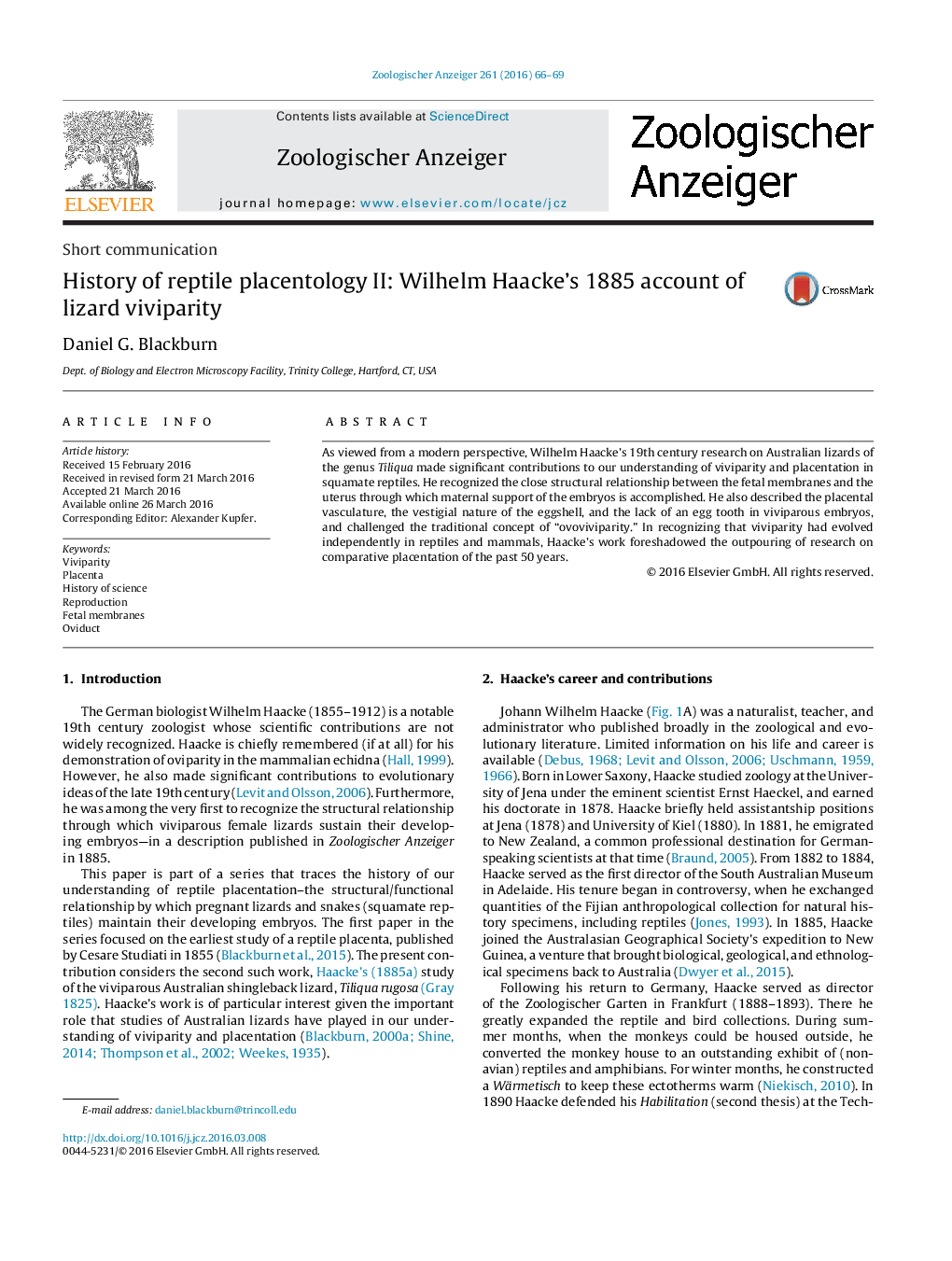| Article ID | Journal | Published Year | Pages | File Type |
|---|---|---|---|---|
| 2790491 | Zoologischer Anzeiger - A Journal of Comparative Zoology | 2016 | 4 Pages |
As viewed from a modern perspective, Wilhelm Haacke’s 19th century research on Australian lizards of the genus Tiliqua made significant contributions to our understanding of viviparity and placentation in squamate reptiles. He recognized the close structural relationship between the fetal membranes and the uterus through which maternal support of the embryos is accomplished. He also described the placental vasculature, the vestigial nature of the eggshell, and the lack of an egg tooth in viviparous embryos, and challenged the traditional concept of “ovoviviparity.” In recognizing that viviparity had evolved independently in reptiles and mammals, Haacke’s work foreshadowed the outpouring of research on comparative placentation of the past 50 years.
